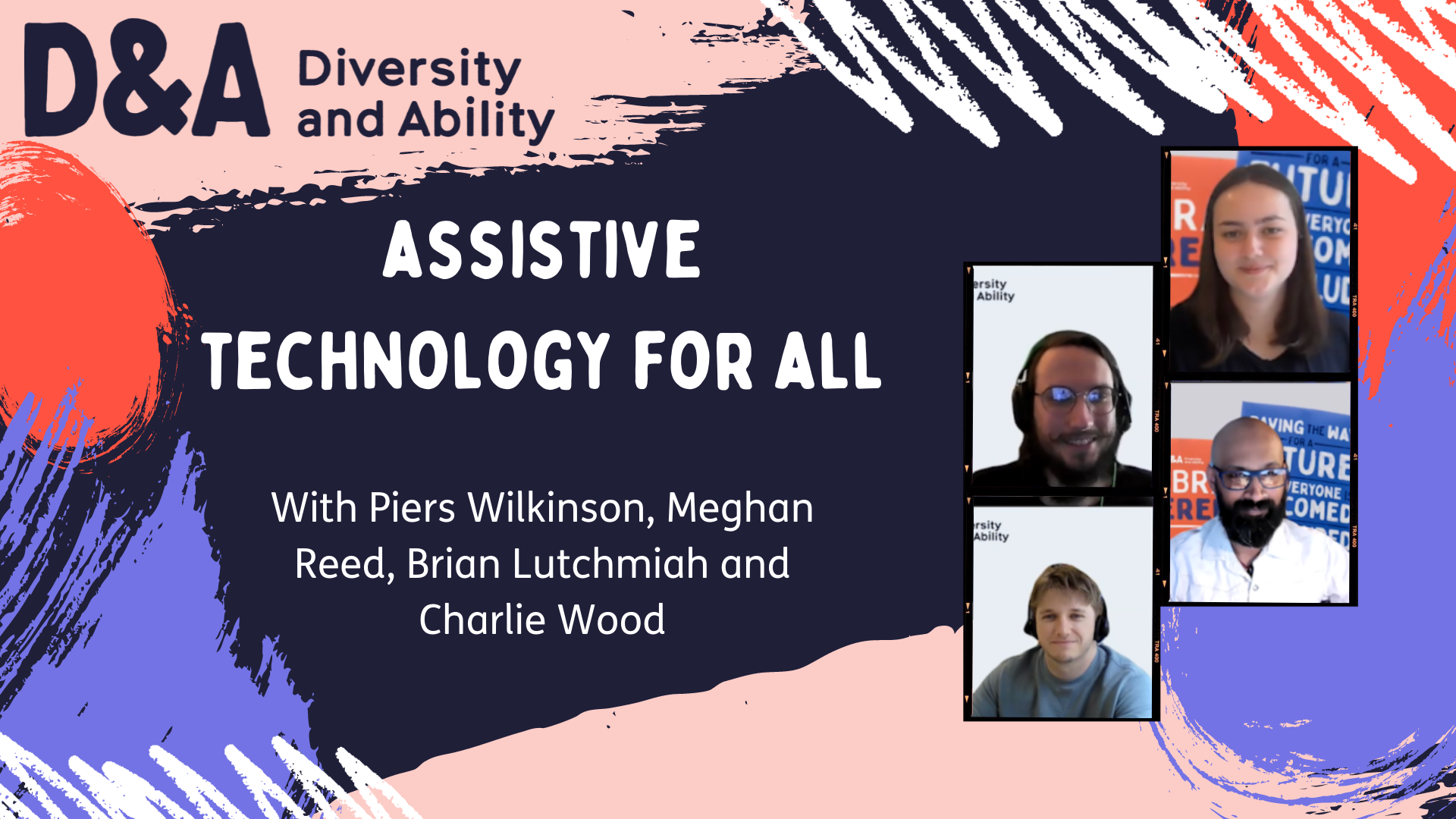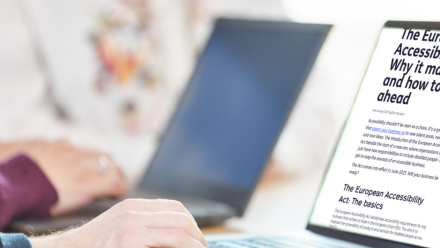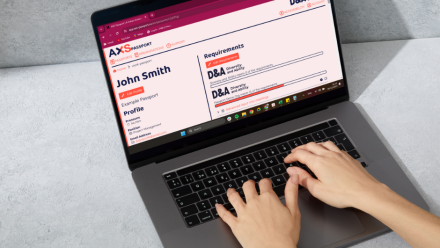How can you promote assistive technology?
24th June 2021 by Ellie Thompson
We love assistive technology. Most of the D&A team came to the organisation having realised just how much of a difference assistive technology can make to our lives, whether that was at a young age or through accessing DSA support at university.
And because we live and breathe assistive technology, we know that there is a software out there for each and every person, something that will remove an access barrier, make your work more efficient or just make your life a little bit easier!
But what can we do to encourage a diverse range of people to explore assistive technology and find the software that works for them?
We asked our team to share their lived experience of, and expertise in, using assistive technology to help us answer the question: how can we encourage assistive technology for all? You can watch the full video now on our YouTube, but here’s a few points to get you started.

1. Realise that assistive technology is already everywhere
As Meghan Reed, our Training and Innovations Lead, said: “When I was at university, I would have told you assistive technology is specific tools for disabled people that mean we can access different things. But if you asked me now, I would probably just read you a list of the apps that are on my phone.”
If you think about it, you may realise that you’re already using assistive technology! Whether that’s a spelling and grammar checker like Grammarly, a navigation tool like Google Maps, or a smart assistant like Siri or Alexa- all of these things are pieces of technology that assist and enable you.
Use this revelation to think deeper. Have a look into the massive diversity of assistive technology options that are out there, and find what else you could be using to enhance your life.
2. Recognise where you might be struggling without even realising it
Our HE Partnerships and Inclusion Lead Brian Lutchmiah has been working in the field of student support for about 20 years. He says that often, when he asks students whether they would benefit from assistive technology, they’ll say things like: “I haven’t used anything before, why would I need that now?”
The problem with this thinking is that in a world that denies neurodiversity and includes only one way of thinking, us neurodiverse and disabled people often have to mask, adapt, or ignore what works best for us so we can fit in.
Charlie Wood, our Higher Education Lead, says: “it wasn’t until I accessed DSA support and received my assistive technology training that I realised how many barriers I had been working through in my education. Accessing text-to-speech software, being able to record my lectures and using organisational tools was genuinely transformative to my way of studying- and really, my way of life.”
3. Making the language we use consistent and inclusive
Maybe it’s time we completely rename assistive technology. Although it’s there to assist us, as Charlie says, “does naming it assistive technology mean that people will just associate it with a disability that they may or may not have?”
Although we know that disabled isn’t a dirty word, we do also acknowledge that it’s a label that still carries with it a lot of stigma and bias. Plus, there are long-established barriers to being formally recognised as being disabled, with lengthy, inaccessible and exclusive diagnostic processes as just one example.
So, what if we were to refer to assistive technology as something else? Maybe ‘inclusive technology’ or ‘study tools for all’?
In our work with Imperial College London, we did just that. You can watch our video for more insight into our project with Imperial, but one important takeaway is that renaming our assistive technology support as inclusive technology had a massive impact on how students interacted with the support. Piers Wilkinson, HE Policy and Partnerships Lead at D&A, reflected on the findings:
“Seeing that two thirds of take-up was from non-disclosed or non-disabled participants is such a poignant statistic. It shows we addressed differences in terminology but also supported people so they didn’t have to disclose, publicly declare or ‘out’ themselves to access support.”
So, what do you think? Should we rename assistive technology? How can we encourage everyone to access the tools that could make a difference for them?
Watch our video to find out more…


